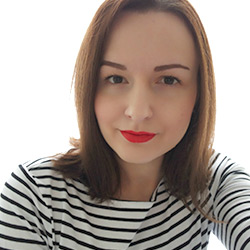Menu

You may have heard of spider veins and varicose veins, but do you actually know what the difference is? There is often confusion around what they are. Both can affect your confidence as you may feel embarrassed by their appearance and consider them to be unsightly.
Varicose veins have gained the lion share of media attention, and spider veins are often lumped under the vein category, however, they are quite separate conditions and should be understood as such. In this article, we hope to make the distinction between the two so that you can begin to understand the difference.
Spider veins are a group of tiny dilated blood vessels that grow close to the surface of your skin. They tend to resemble a spider’s web and are normally red or blue in colour. While they can appear anywhere on the body, they are most common on the face and legs. Spider veins are most common in those over 50 years of age and they present a range of symptoms other than their appearance.
Varicose veins are diagnosed during a physical examination which includes reviewing blood flow and the use of equipment such as an ultrasound or venogram – in which x-rays create images of your veins.
Spider veins are much smaller in appearance than varicose veins. Varicose veins are enlarged veins that usually appear as if they are twisting or bulging. They are red, blue or flesh coloured and are most commonly found on the legs. You might experience other symptoms if you suffer from varicose veins, including tiredness, heavy legs, burning or throbbing.
Varicose veins may become more prevalent with age but often first appear in pregnancy, as do spider veins1. As well as pregnancy, risk factors for developing both include occupations that rely on standing, and hereditary vein conditions, such as those with a family history of clotting problems. Other lifestyle and risk factors include obesity, birth control, menopause, skin trauma, sun exposure, wearing tight clothing, vein surgery and constipation. Furthermore, being female, dietary factors and physical activity can all play a part in their development2.
Varicose veins are caused by the backup of blood in the veins. The heart pumps oxygenated blood around the body through a network of arteries delivering nutrients and oxygen to all cells, whilst veins carrying de-oxygenated blood back to the heart. Valves within the veins help to push this blood upwards from the legs. If these valves become damaged or weak, blood moves back into the veins and builds-up and they protrude causing varicose veins to develop. Spider veins are thought to develop where collagen in the blood vessel walls is weakened so that the pressure of blood in them forms bulges in the vessel walls. The capillaries then grow in the direction of the bulge.
There are health risks associated with varicose veins. A skin ulcer may form where the vein doesn’t drain. Spider veins may occasionally result in bleeding if the skin is thin and fragile and more prone to injury. So if collagen levels are compromised, this can weaken the blood vessel walls which leads to the development of spider veins.
It is essential to consider spider and varicose veins as two separate entities, especially in their appearance. Spider veins are essentially harmless and treatments can improve their appearance if you’re feeling self-conscious or uncomfortable. To discover more about vein health, collagen, and spider veins take a look around our website or chat to one of our Nutrition Advisors.
References
1. Campbell B (2006) Varicose Veins and Their Management, British Medical Journal, London. 333.7562: 287
2. Beebe-Dimmer J, Pfeifer JR, Engle J, Schottenfeld D (2005) The Epidemiology of Chronic Venous Insufficiency and Varicose Veins, Annuals of Epidemiology, March (15): 175-184
3. Helmerhorst FM, Bloemenkamp KW, Rosendaal FR, Vandenbroucke JP (1997) Oral Contraceptives and Thrombotic Disease: Risk of Venous Thromboembolism, Thrombosis and Haemostasis (1): 78
4. Rabe E, Pannier-Fischer F, Gerlach H, Breu F.X, Guggenbichler S, Zabel M (2004) Guidelines for Sclerotherapy of Varicose Veins, Dermatologic Surgery (30): 687-693
5. Goldman MP, Weiss RA (2011) Sclerotherapy: Treatment of Varicose and Telangiectatic Leg Veins.
6. Bernstein E, Kornbluth S, Brown D.B, Black J (1999) Treatment of Spider Veins Using a 10 Millisecond Pulse-Duration Frequency-Doubled Neodymium YAG Laser, Dermatologic Surgery (25): 316-320

Zoe is an experienced medical copywriter and blogger with a passion for creating engaging content that informs or entertains. She is currently studying for a Master's degree.